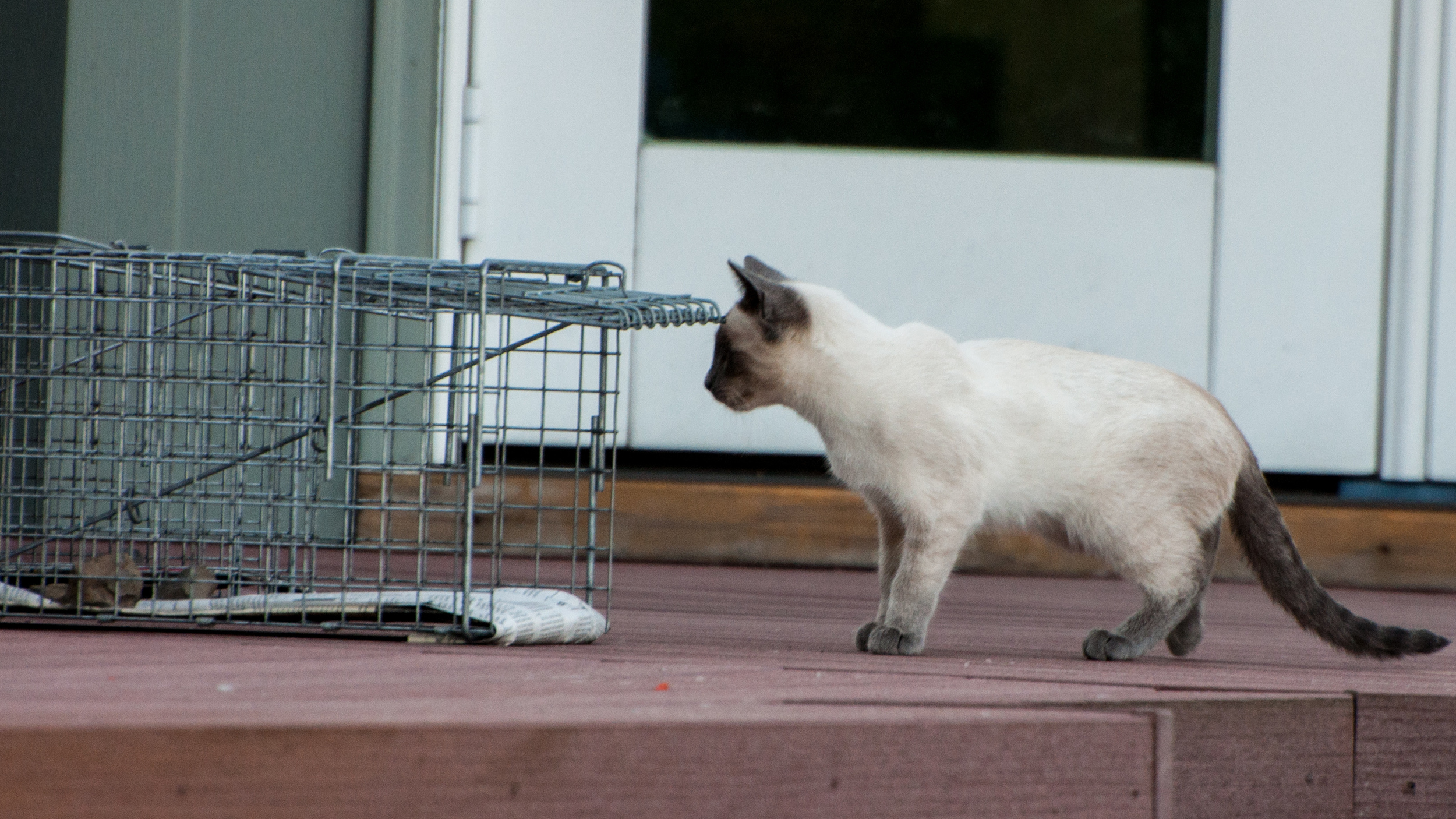
Trap-Neuter-Return (TNR)
The Feral Cat Coalition of Oregon practices Trap-Neuter-Return (TNR). TNR is a process in which caregivers who are feeding feral cats trap them in humane traps. They then take them to a spay/neuter program and after recovery, return the cats to where they are feeding them. Adoptable cats and kittens are placed in homes whenever possible. Below read why TNR works for many reasons. Also, click here for a printable flyer about Trap Neuter Return (TNR) vs. Alternative Approaches.
TNR Works.
Information on how well TNR works is beginning to accumulate. The Stanford University Cat Network reduced its feral population from 1000-1500 cats to 300 over a ten-year period. The Southern Animal Foundation in Louisiana reduced one New Orleans population from 500 to 65 over three years, through TNR and adoptions. Astonishing numbers of kittens have not been born due to these efforts.
TNR is the compassionate approach/solution to feral and stray cat overpopulation.
TNR teaches compassion and responsible cat care. While TNR actually reduces the number of cats breeding, it also opens the door to educating people about the importance of spaying and the plight of feral and stray cats. Trapping and killing teaches young and old that it is okay to create unwanted offspring and then kill the surplus - leaving no room for education or compassion for life.
Trapping and killing does not solve the problem.
Trapping and killing has been practiced for many years (as the only option available) and it does not work. For all the years this approach was practiced, the cat population continued to explode.
New cats replace those cats removed.
Cats tend to congregate around a food source. When cats are trapped and removed from an area, new cats move in to take advantage of the food source. Alley Cat Allies, a national feral cat network, call this phenomenon "the vacuum effect."
Caregivers will not allow it.
Thousands of kind people feed and care for feral and stray cats. Most will not allow the cats they feed to be trapped and killed, but welcome the opportunity to have the cats trapped, neutered and returned. If their only choice is to have the cats killed, they will opt to do nothing and the cats will breed - adding to the overpopulation problem.
Society does not support trapping and killing.
When communities have tried to implement mass trapping and killing efforts, the community outcry has stopped the effort.
TNR helps reduce the number of cats euthanized at shelters.
When fewer kittens are born to feral and stray cats, fewer cats and kittens enter shelters. This means fewer are killed because there aren't enough homes for all the cats who need them, and fewer are deemed unadoptable because they are feral (untamed). Fewer cats competing for adoptive homes means more find a home, and fewer are therefore euthanized.

